Nombre:
Base Naval de San Diego
Otro: Base Naval de Coronado, Base Aeronaval de North Island, Base Naval de Point Loma
Localización:
Ver mapa más grande
Tipo: Militares
Categoría: Bases Navales
Foto:
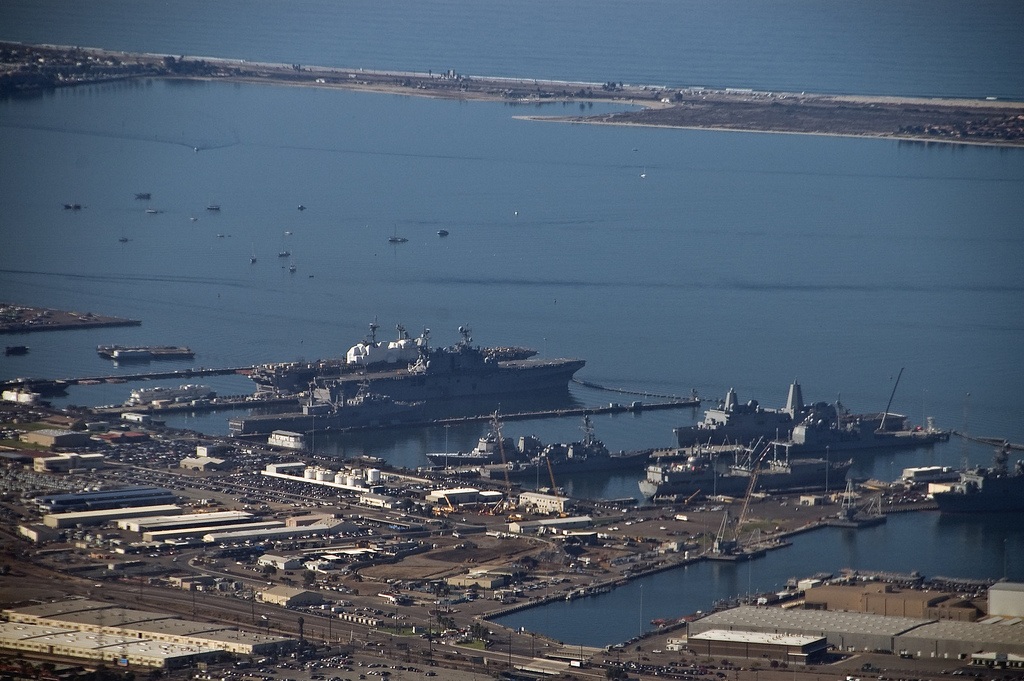
Voto:
Continente: América
País: Estados Unidos
Localización: San Diego
Año: 1922
Estado: Terminado
Descripción:Naval Base San Diego is the largest base of the United States Navy on the west coast of the United States, in San Diego, California. Naval Base San Diego is the principal homeport of the Pacific Fleet, consisting of 54 ships and over 120 tenant commands. The base is composed of 13 piers stretched over 977 acres (3.95 km2) of land and 326 acres (1.32 km2) of water. The total on base population is 20,000 military personnel and 6,000 civilians.
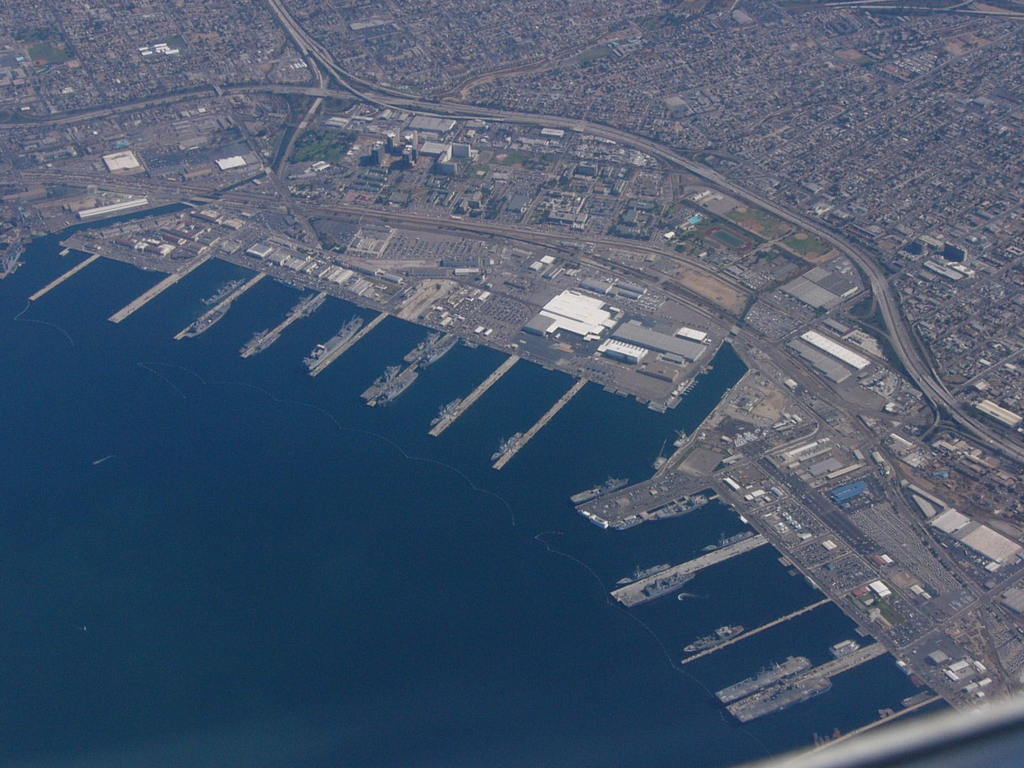
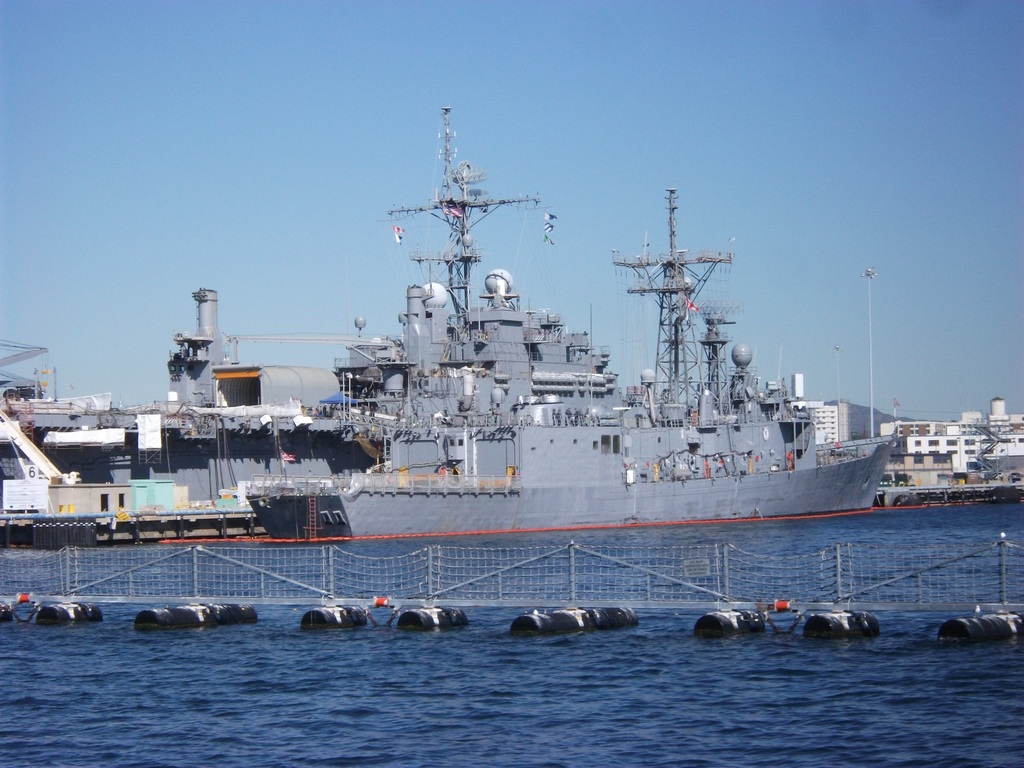
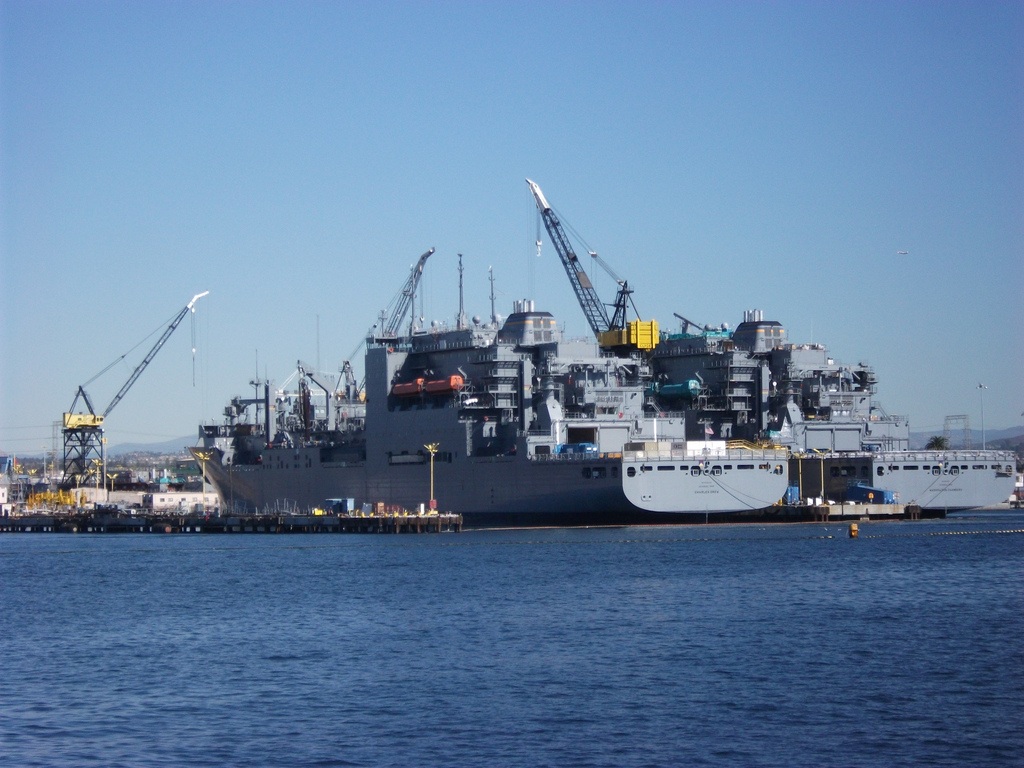
History
The 977 acres (3.95 km2) of the land on which the Naval Base sits today was occupied in 1918 by a coalition of concrete ship building firms known as the Emergency Fleet Corporation, under the single company name Pacific Marine Construction. But Pacific Marine began to lose profits with the conclusion of World War I, and negotiated a return of the land back to the City of San Diego. Meanwhile, the Navy was exploring the small tract of land to establish a west coast ship repair facility and moved on the opportunity to acquire the land. By 1920, the Navy and the Emergency Fleet Corporation had negotiated the transfer of land improvements to the United States Navy. Still, three obstacles stood in the way of a Navy repair facility: the coalition company, Schofield Engineering Co., still retained an option to purchase the existing plant, a local shipping board had not granted permission for more construction and finally the Navy had not yet passed an appropriations bill to authorize funds to begin work.
Nevertheless, by June 1920, Congress passed the appropriations bill- $750,000 of which was earmarked for the navy repair base. With the money appropriated, Schofield still delayed in releasing their option on the land. At the time, Admiral Roger Welles, then Commandant of the 11th Naval District, had grown weary of Schofield's delaying tactics and threatened to pull stakes and establish a repair base in San Pedro, California.
His threats worked. On 21 February 1921, Welles assumed formal custody of the property. In May 1921, Commander H.N. Jensen, Commanding Officer of the repair tender USS Prairie, was directed to moor at the site to establish repair operations. On 23 February 1922, acting Secretary of the Navy, Teddy Roosevelt Jr. issued General Order 78 establishing the facility as the U.S. Destroyer Base, San Diego.
The base has been officially renamed almost half-a-dozen times during its lifetime.[citation needed]
During its first years in commission, the base grew rapidly as repair facilities expanded, torpedo and radio schools were established and more shops were constructed. During 1924, the base decommissioned 77 destroyers and commissioned seven.
By 1937, the Destroyer Base had added two additional tracts of land and by then its 29 buildings and other improvements amounted to a cost of more than $3.2 million.
The base then expanded heavily during World War II and by 1942, the Navy had added expanded fleet training schools, and an amphibious force training unit. By the following year, it was determined the scope of operations exceeded the base’s basic function as a Destroyer Base.[1] The base was re-designated the U.S. Repair Base, San Diego, a title it retained throughout World War II. Between 1943 and 1945 the newly named base performed conversion, overhaul, maintenance and battle damage repair to more than 5,117 ships. Central to this maintenance were the Navy’s construction and delivery of 155 new floating dry docks deployed to various bases, including three 3,000-ton, three 1,000-ton and one 900-ton floating docks remaining at the San Diego Repair Base. The floating dry docks became the central repair and training facilities on the base which were crucial to the World War II mission.
After World War II, base operations were again reorganized, with a post-war mission to provide logistical support (including repair and dry-docking) to ships of the active fleet. On 15 September 1946, the Secretary of the Navy re-designated the repair base Naval Station, San Diego. By the end of 1946 the base had grown to 294 buildings with floor space square footage of more than 6,900,000 square feet (640,000 m2), berthing facilities included five piers of more than 18,000 feet (5,500 m) of berthing space. Land then totaled more than 921 acres (373 ha) and 16 miles (26 km) of roads. Barracks could accommodate 380 officers and 18,000 enlisted men. More than 3,500 sailors could be fed in the galley at a single sitting on the base.
Later, in the 1990s, the Naval Station became the principal homeport of the then U.S. Pacific Fleet when the Long Beach Naval Shipyard was closed for the final time on 30 September 1994. Naval Station San Diego was realigned under Commander, Navy Region Southwest and became one in a triad of metropolitan Navy bases that now make up the bulk of the metro area Navy’s presence. With that change, the base became the hub of all Navy port operations for the Region, assumed logistical responsibility for both Naval Medical Center San Diego and the Region headquarters and was re-designated Naval Base San Diego.
Because of its geographic location, and the positioning of its main entrance, the Naval Base has been known as the 32nd Street Naval Station not only by the local community, but Sailors and veterans around the world.[citation needed]
http://en.wikipedia.org/wiki/Naval_Base_San_Diego
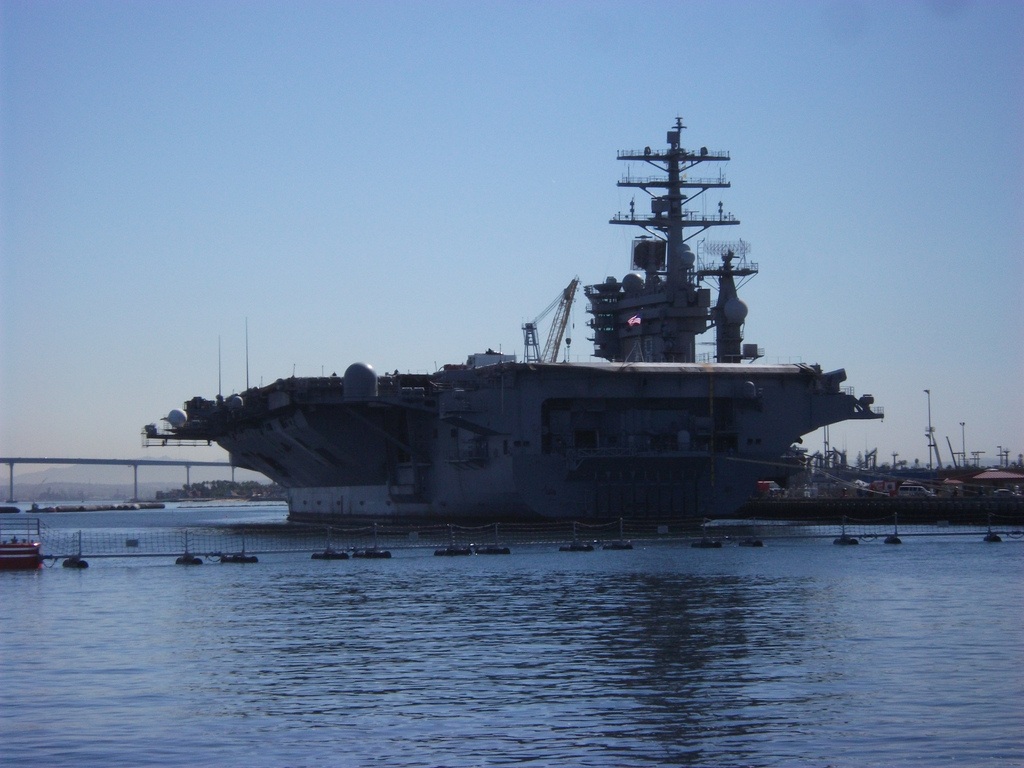
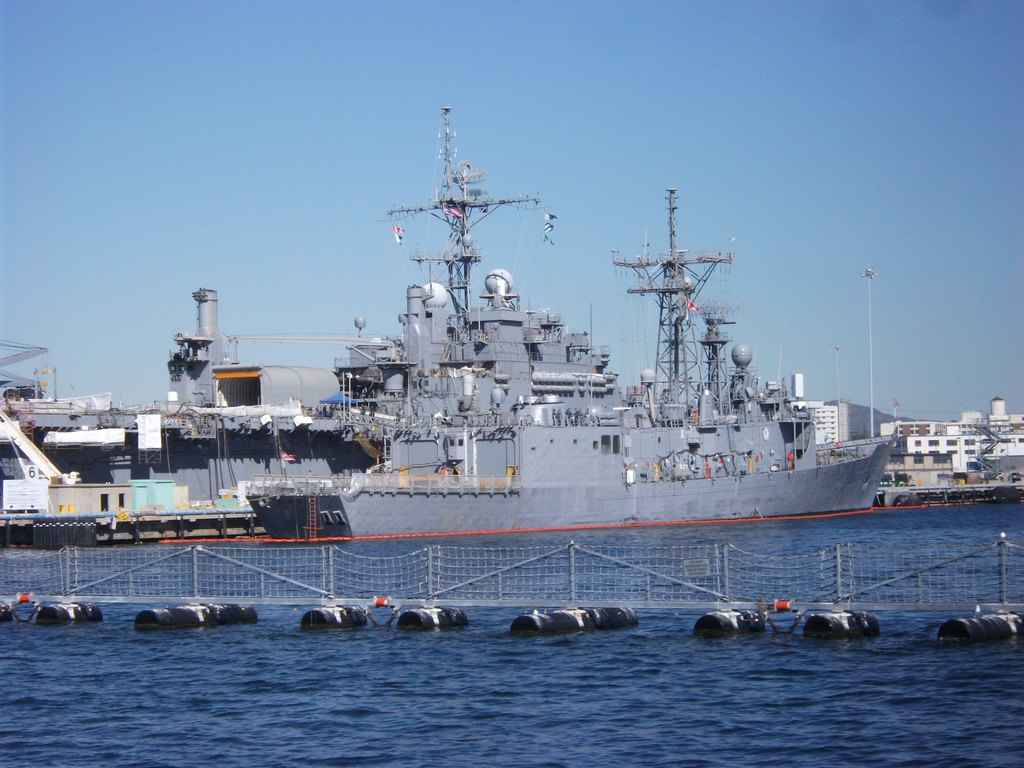
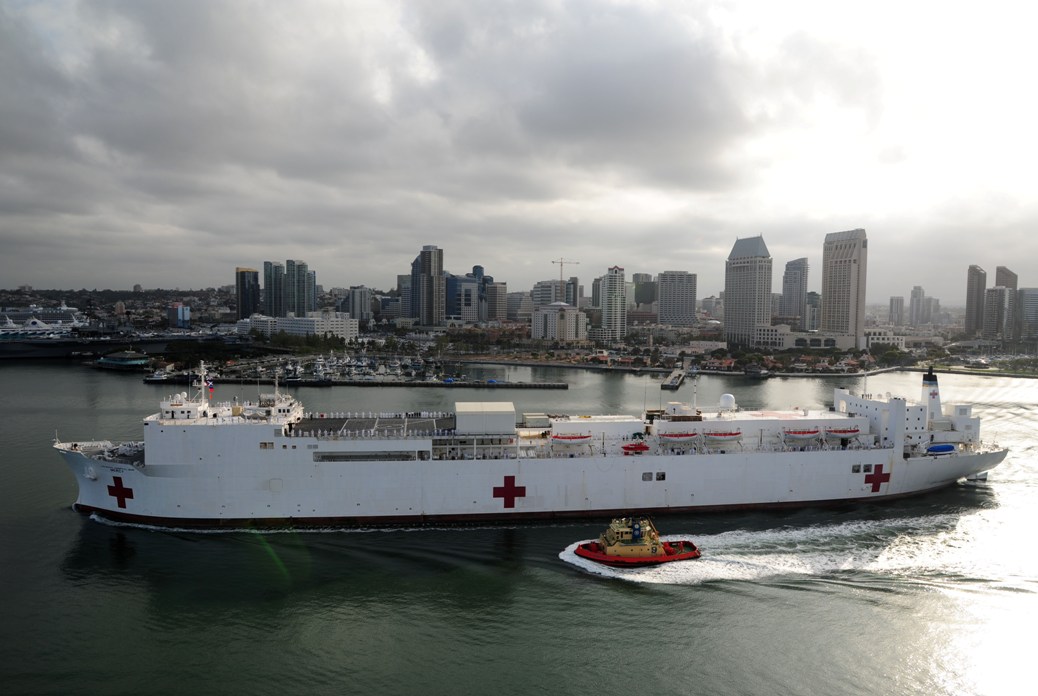
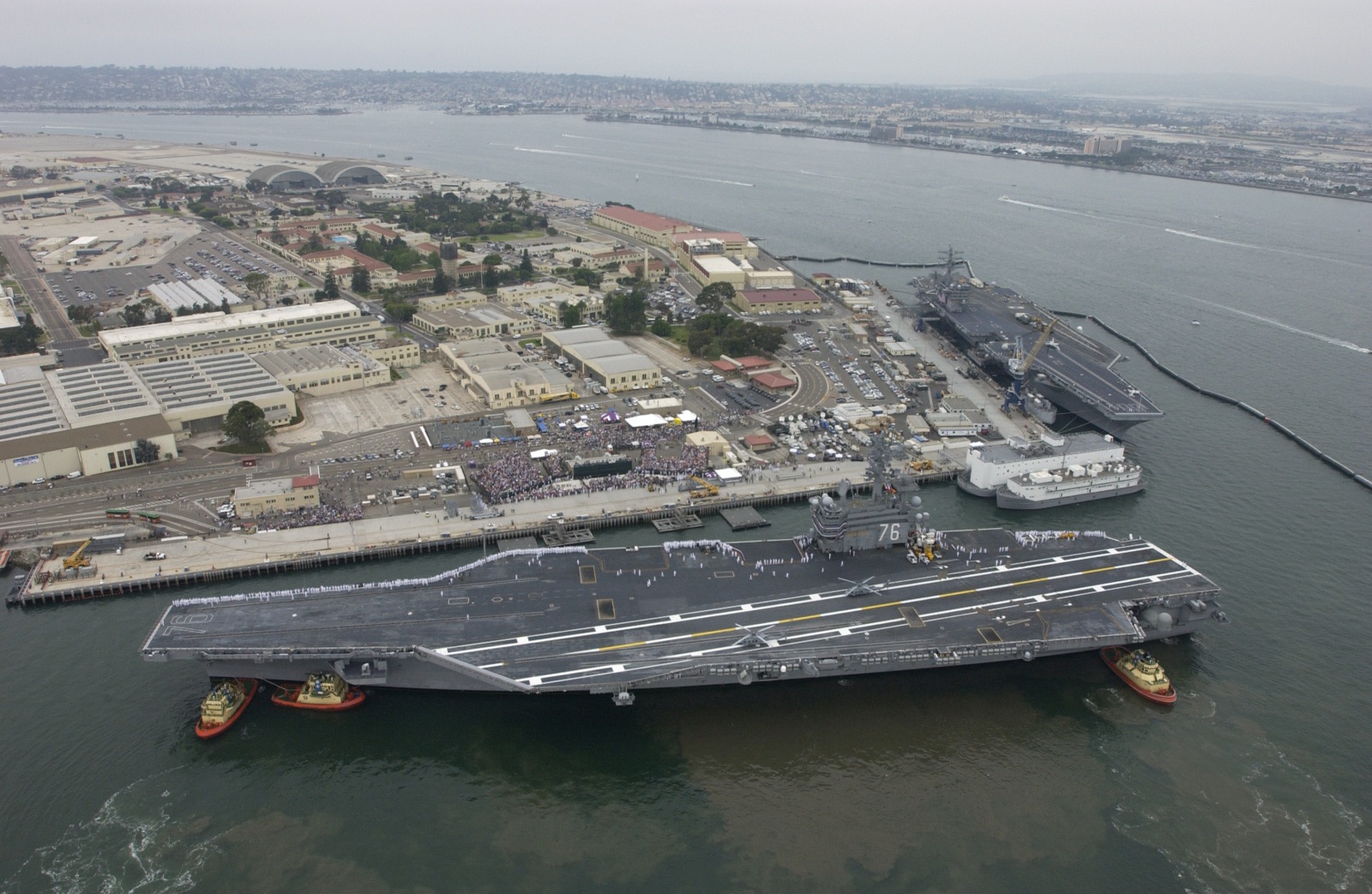
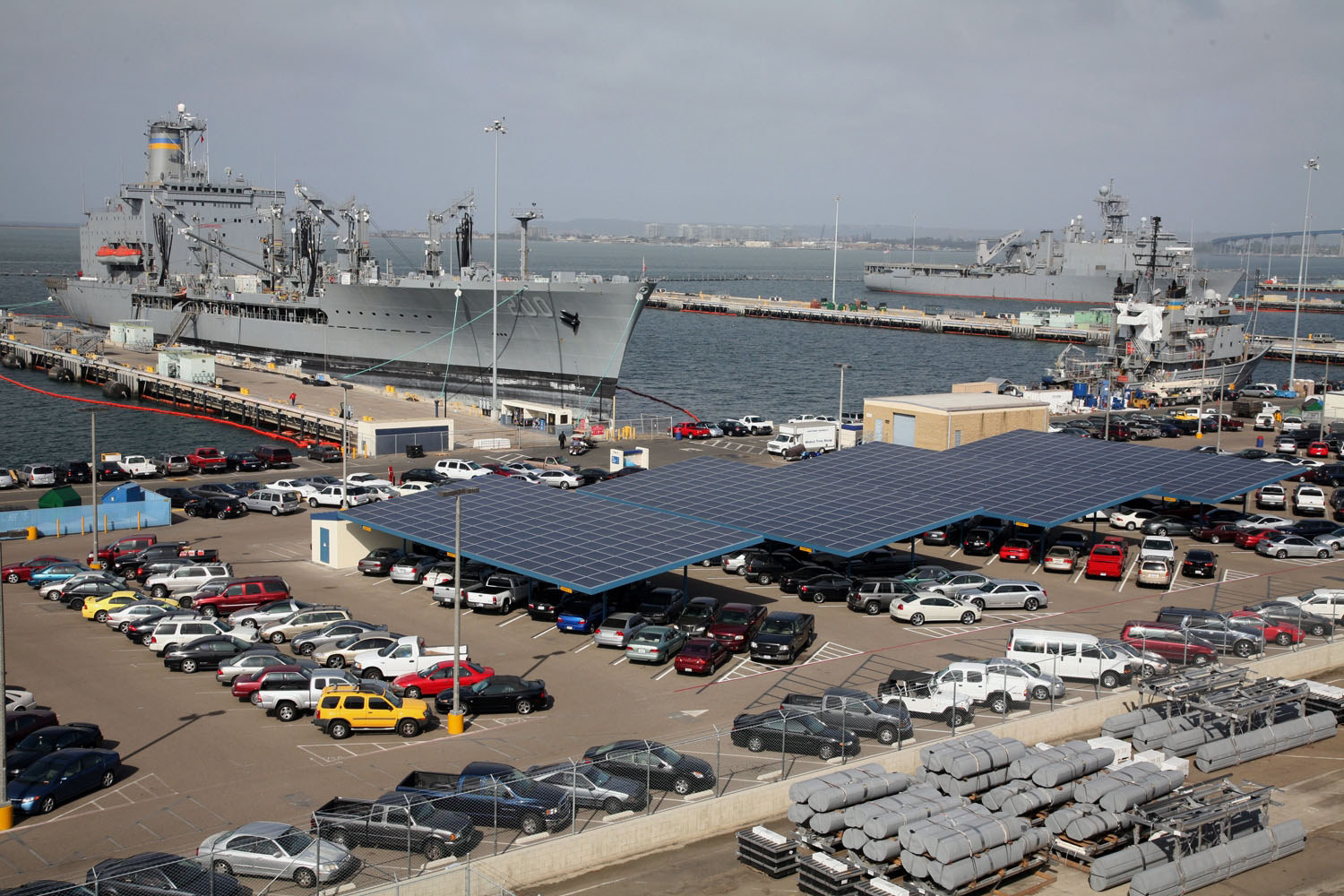
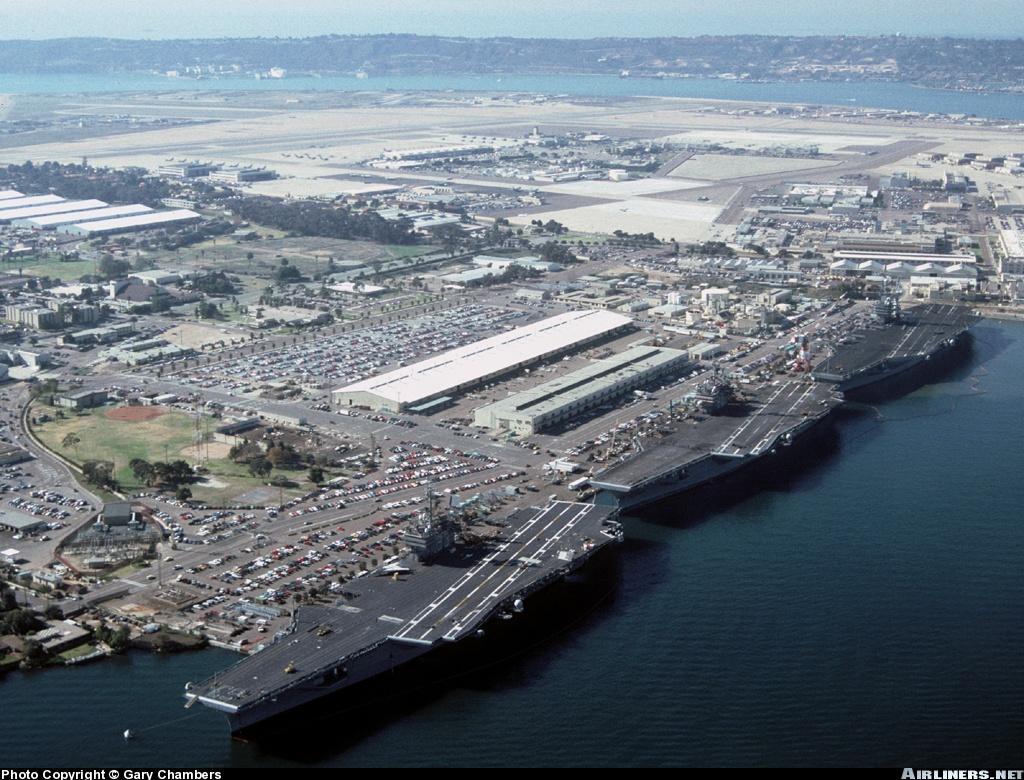
Naval Base Coronado (NBC) is a consolidated Navy installation encompassing eight military facilities stretching from San Clemente Island, located seventy miles west of San Diego, California, to the La Posta Mountain Warfare Training Facility and Camp Morena, located sixty miles east of San Diego.
Organization
In 1997, Naval Base Coronado was created, incorporating seven separate Naval installations under one Commanding Officer. Those facilities include: Naval Air Station North Island (NASNI); Naval Amphibious Base Coronado (NAB); Outlying Field Imperial Beach (OLIB); Naval Auxiliary Landing Field San Clemente Island (SCI); Silver Strand Training Complex (SSTC), formerly known as the Naval Radio Receiving Facility; Camp Michael Monsoor (CMM); and the Remote Training Site, Warner Springs (SERE).
These seven facilities encompass more than 57,000 acres (230 km²) and make NBC the largest command in the southwest region of the U.S.
Employing over 36,000 military and civilian personnel, NBC accounts for over 30% of the Region's total workforce, and has the largest workforce in San Diego County.
http://en.wikipedia.org/wiki/Naval_Base_Coronado
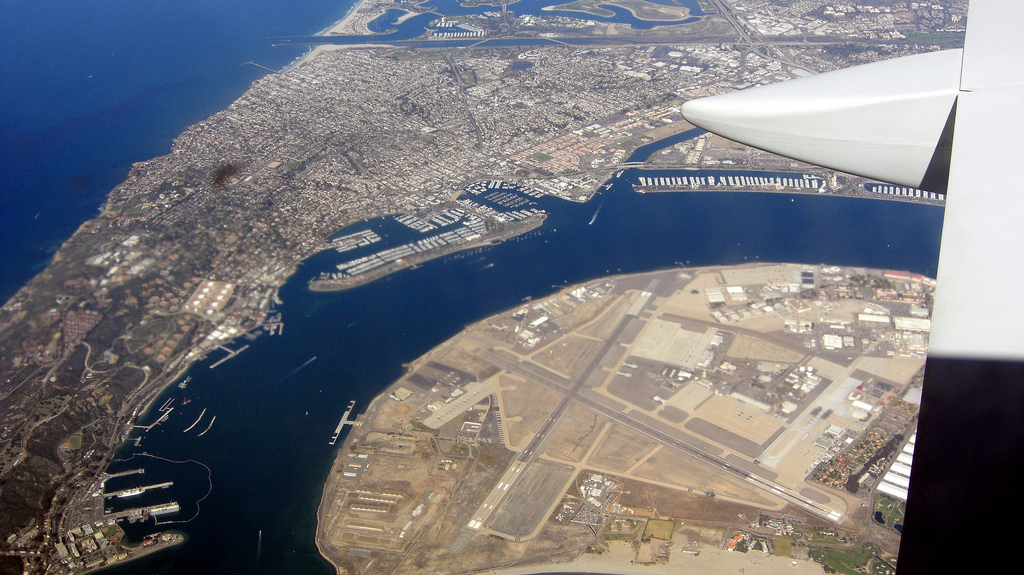
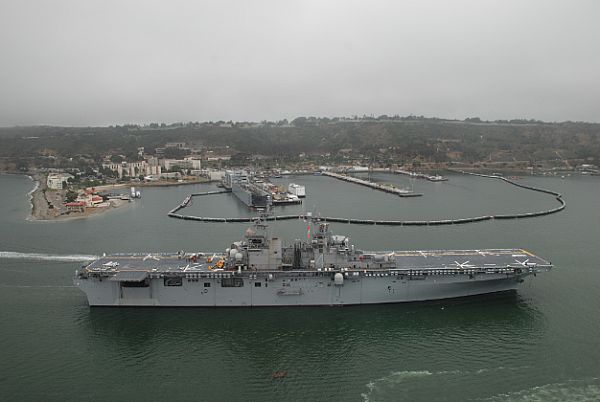
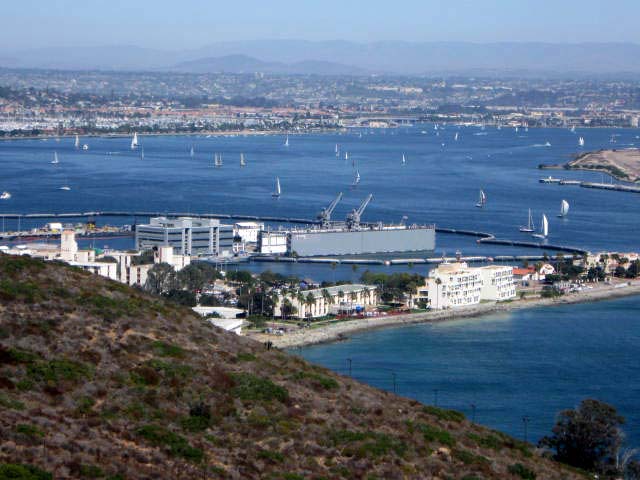
La Base Aeronaval de North Island (Naval Air Station North Island o NAS North Island) (código IATA: NZY, código OACI: KNZY, FAA LID: NZY) está localizado en el extremo norte de la península de Coronado en la Bahía de San Diego y es puerto de numerosos portaaviones de la Armada de los Estados Unidos. Forma parte del gran complejo aeroespacial-industrial de la Armada de los Estados Unidos, Base Naval de Coronado en el Condado de San Diego, California.
El oficial en comando de NAS North Island (alias NASNI) es también el oficial en comando, Base Naval de Coronado. Por lo tanto, él comanda y administra la Base Naval Anfibio de Coronado, Outlying Field Imperial Beach, Silver Strand Training Complex, Mountain Training Facility LaPosta, Warner Springs Training Area, y Naval Auxiliary Landing Facility, San Clemente Island. NASNI, con tan sólo sus comando en el área metropolitana de San Diego, encierra la ciudad de Coronado desde la entrada de la Bahía de San Diego a la Frontera entre Estados Unidos y México. NAS North Island por sí propia tiene 23 escuadrones y 80 comando y actividades, de la cual, la Naval Aviation Depot, es el empleador aeroespacial más grande en San Diego.
http://es.wikipedia.org/wiki/Base_Aeronaval_de_North_Island
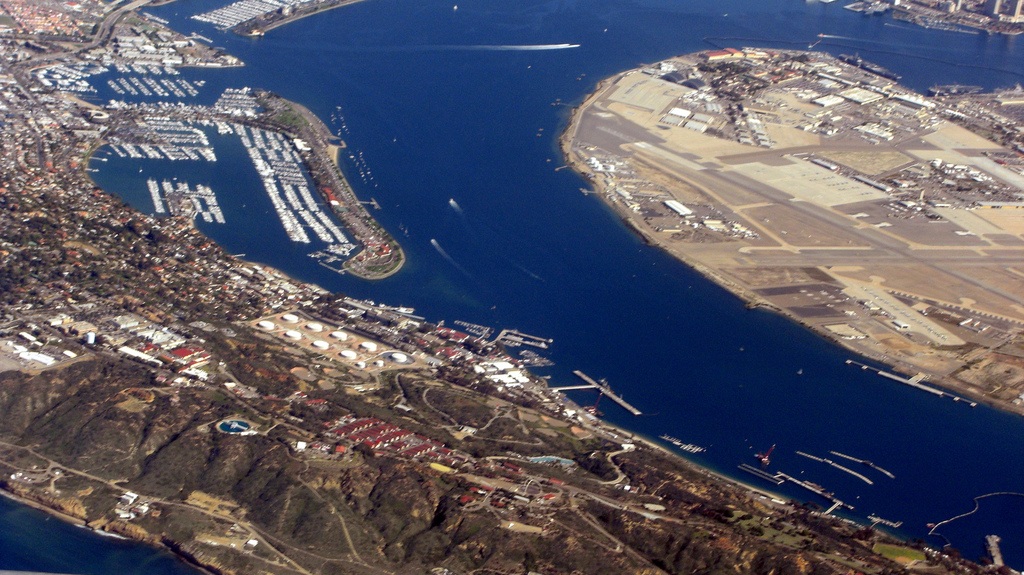
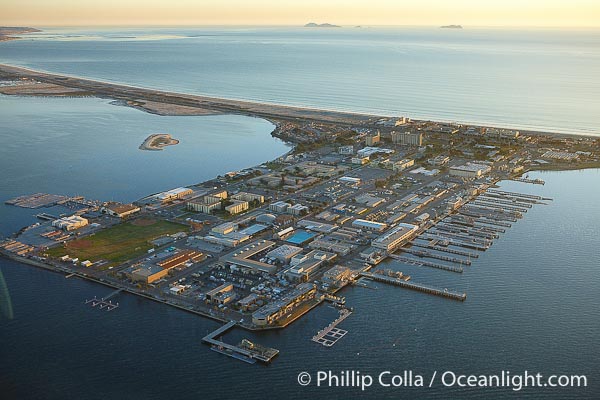
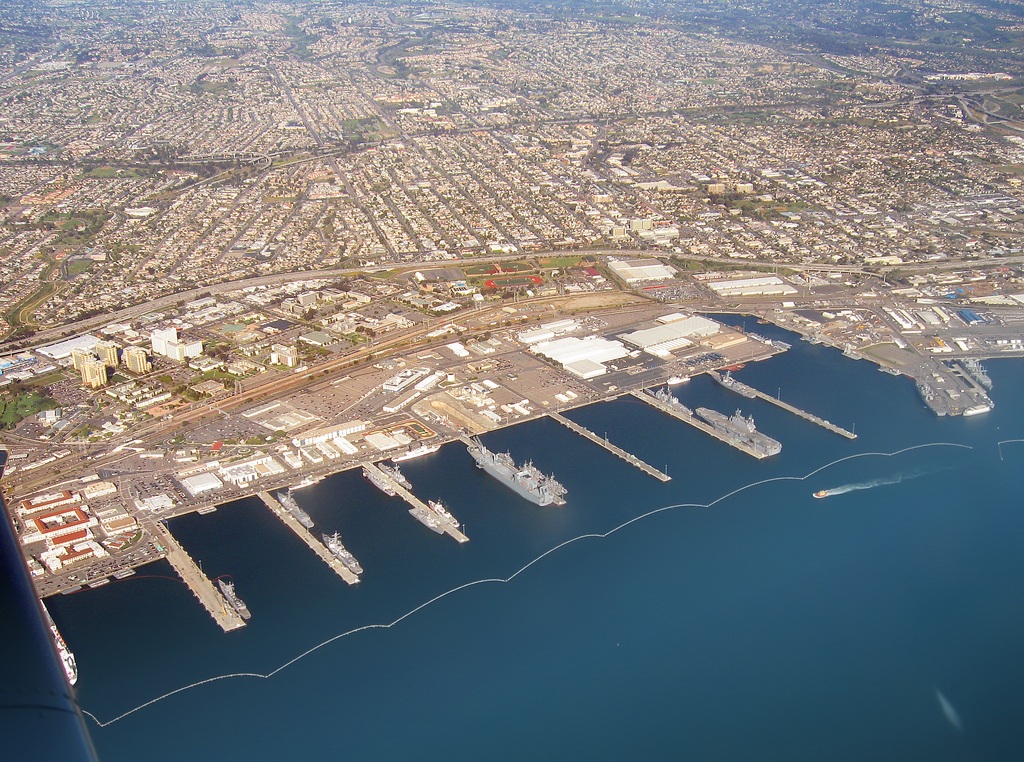
Located in Point Loma, a neighborhood of San Diego, California, Naval Base Point Loma (NBPL) was established on 1 October 1998 when Navy facilities in the Point Loma area of San Diego were consolidated under Commander, Navy Region Southwest. Naval Base Point Loma consists of seven facilities: Submarine Base, Fleet Antisubmarine Warfare Training Center, Fleet Combat Training Center Pacific, Space and Naval Warfare Systems Command (SPAWAR), SPAWAR Systems Center, the Fleet Intelligence Command Pacific and Naval Consolidated Brig, Miramar. These close-knit commands form a diverse and highly technical hub of naval activity. The on base population is around 22,000 Navy and civilian personnel.
Mission statement
To provide direct day-to-day operation of base support functions and to ensure that the base best serves the Fleet and tenant commands. We are a regional team dedicated to providing the highest level of base operating support and quality of life services for all operating forces and shore activities on Naval Base Point Loma.
History
In February 1852 President Millard Fillmore set aside the southern portion of Point Loma of about 1,400 acres (6 km2) for military purposes. Subsequently, it was assigned to the U.S. Army and named Fort Rosecrans, after General William Rosecrans, an 1842 graduate of the U.S. Military Academy. In 1898 the Army built a coast artillery installation on the site which remained active until 1945, when the University of California Division of War Research and the Navy Radio and Sound Laboratory occupied the site as the Navy Electronics Laboratory (NEL). In 1932, the site of Fort Rosecrans was registered as California Historical Landmark #62.[1]
Submarine Group, San Diego was established in 1946, and Submarine Flotilla 1 was activated in 1949. In 1959 Fort Rosecrans was turned over to the U.S. Navy. The Navy Submarine Support Facility was established in November 1963 on 280 acres (1.1 km2) of the land.[2] Bathyscaphe Trieste arrived at NEL in 1958; and modified Bathyscaphe Trieste II was based here from 1965 to 1984.[3] On 27 November 1974 the base was re-designated a shore command, serving assigned submarines, Submarine Group Five, Submarine Squadron Three, Submarine Development Group One, the Submarine Training Facility and later, Submarine Squadron Eleven. On 1 October 1981 the base was designated as Naval Submarine Base.
Starting in April 1995, several commands were decommissioned or their homeports were changed to meet the down-sizing requirements of the Navy. Commands throughout San Diego were regionalized in an effort to provide equal or better base services while managing a reduced budget. The six naval installations on Point Loma were consolidated as Naval Base Point Loma on 1 October 1998.
http://en.wikipedia.org/wiki/Naval_Base_Point_Loma
http://www.flickr.com/photos/syrianakhouri/tags/vessal/
http://www.flickr.com/photos/sp8254/sets/72157603261801670/with/2370647490/
http://www.flickr.com/photos/86813892@N00/3323324015/in/photostream/
http://www.lasegundaguerra.com/viewtopic.php?p=94287
http://www.popularmilitary.com/reference/san-diego-naval-base.htm
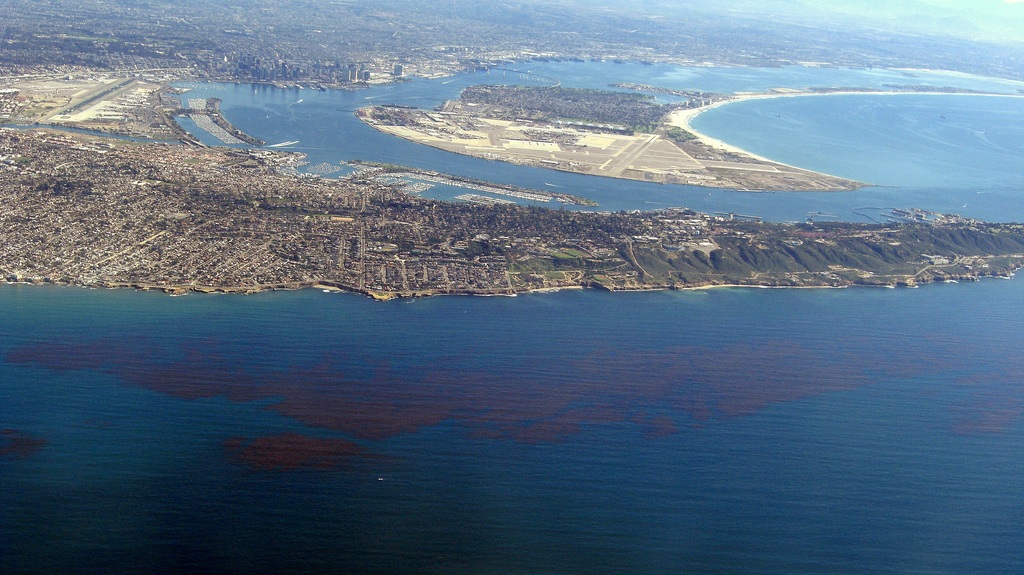
Vídeo:
Web recomendada: http://www.cnic.navy.mil/SanDiego/index.htm
Contador: 20864
Inserción: 2013-02-04 15:18:13
Lugares a visitar en un radio de 100 km (en línea recta)
Mapa de los lugares a 100 km (en línea recta)
Mostrando Registros desde el 1 hasta el 0 de un total de 0
Visitas |
Más visitados Basílica de San Marcos 154934 Catedral de Notre Dame (París) 144231 Torre de Pisa 131572 Monte Saint-Michel 100682 Presa de las Tres Gargantas 81532 |
Incorporaciones |
Comentarios hazola Cúpula de la Roca gracias me... gera Buenos Aires las mejores fotos de la mejor ciudad del... Daniel M. - BRASIL San Francisco ... PEQUE Presa Chicoasén SERA QUE ALGUIEN ME PUEDE DAR MAS INFORMACIÓN DE ESTE PROYECTO ESTUDIO EN LA UNACH Y ES PARA UN... Mery Huaca Pucllana Muy interesante, muy buena la información y... |
 Tweet
Tweet


